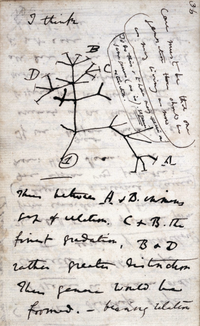
Photo from wikipedia
Multi-metallic Ir-based systems offer significant opportunities for enhanced oxygen evolution electrocatalysis by modifying electronic and geometric properties of the active catalyst. Herein, a systematic investigation of bimetallic Ir-based thin films… Click to show full abstract
Multi-metallic Ir-based systems offer significant opportunities for enhanced oxygen evolution electrocatalysis by modifying electronic and geometric properties of the active catalyst. Herein, a systematic investigation of bimetallic Ir-based thin films was performed to identify activity and stability trends across material systems for the oxygen evolution reaction (OER) in acidic media. Electron beam evaporation was used to co-deposit metallic films of Ir, IrSn2, IrCr, IrTi, and IrNi. The electrocatalytic activity of the electrochemically oxidized alloys was found to increase in the order of IrTi < IrSn2 < Ir ~ IrNi < IrCr, with the IrCr system demonstrating two times the catalytic activity of Ir at 1.65 V vs. RHE. Density functional theory calculations suggest that this enhancement is due to Cr active sites that have improved oxygen binding energetics compared to pure Ir-oxide. This work identifies Ir-Cr as a promising new catalyst system that facilitates reduced precious metal loadings for acid-based OER catalysis.
Journal Title: ACS applied materials & interfaces
Year Published: 2019
Link to full text (if available)
Share on Social Media: Sign Up to like & get
recommendations!